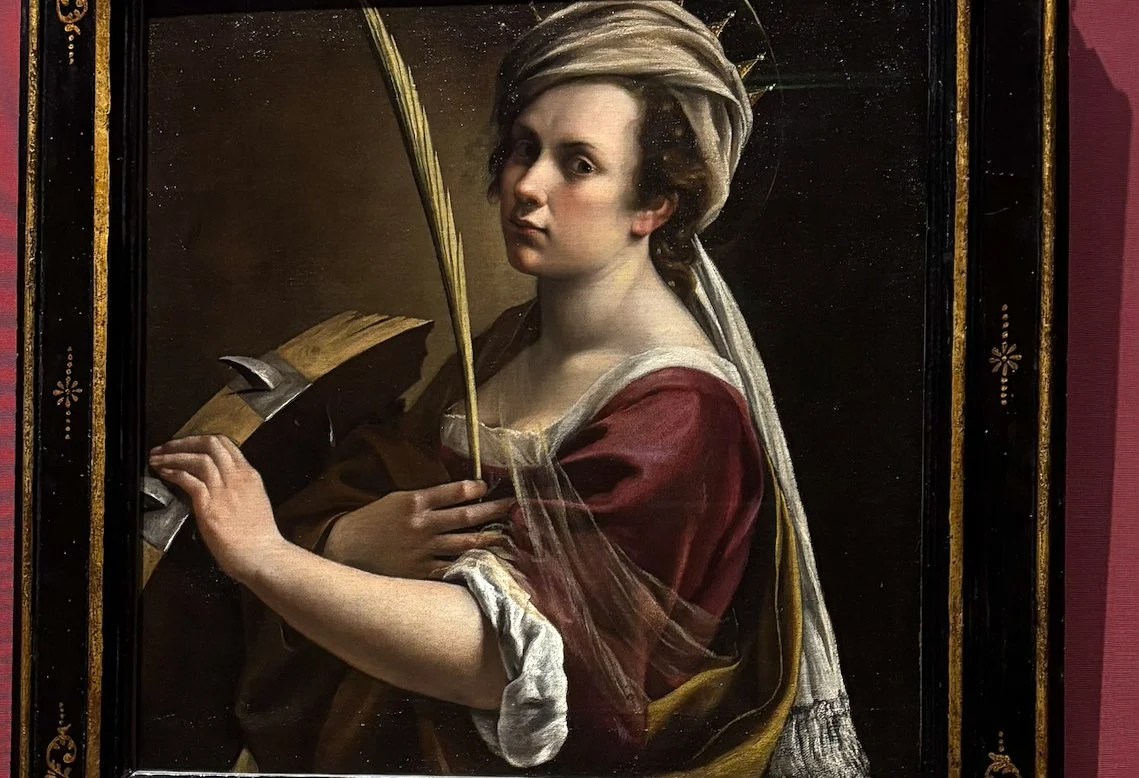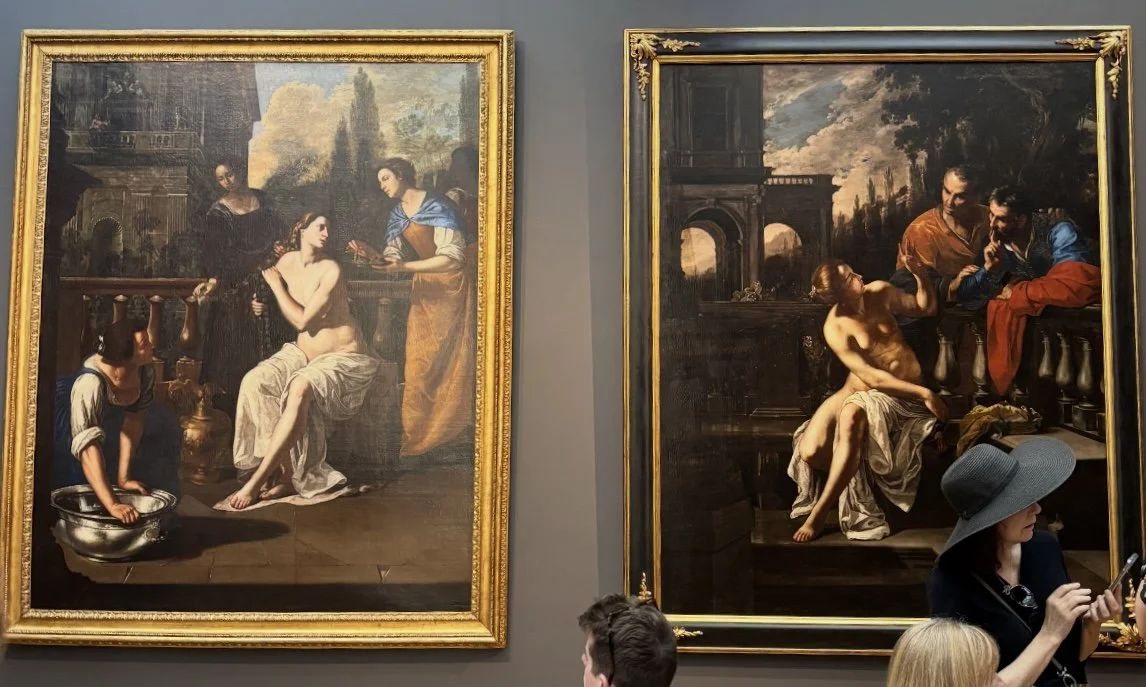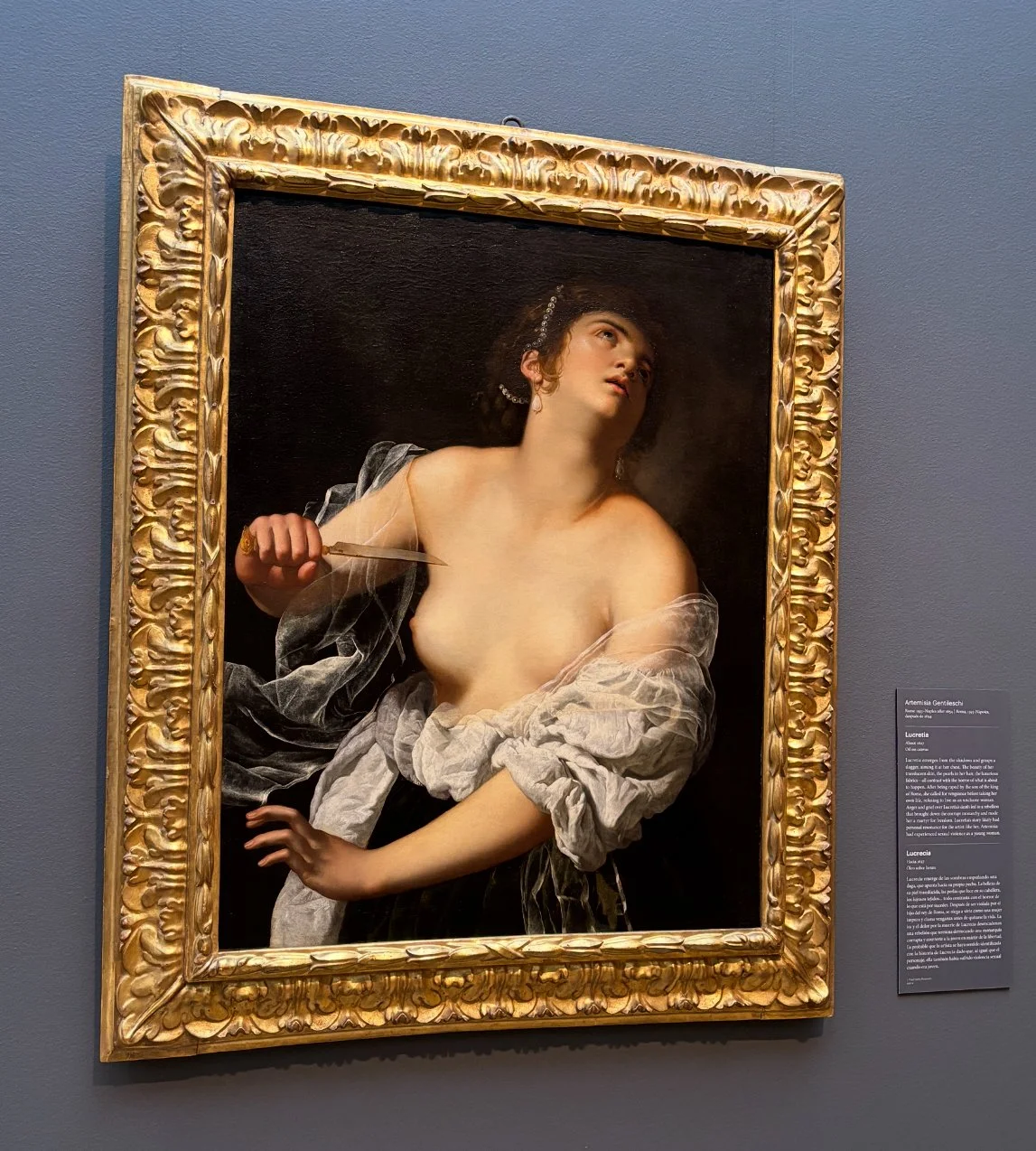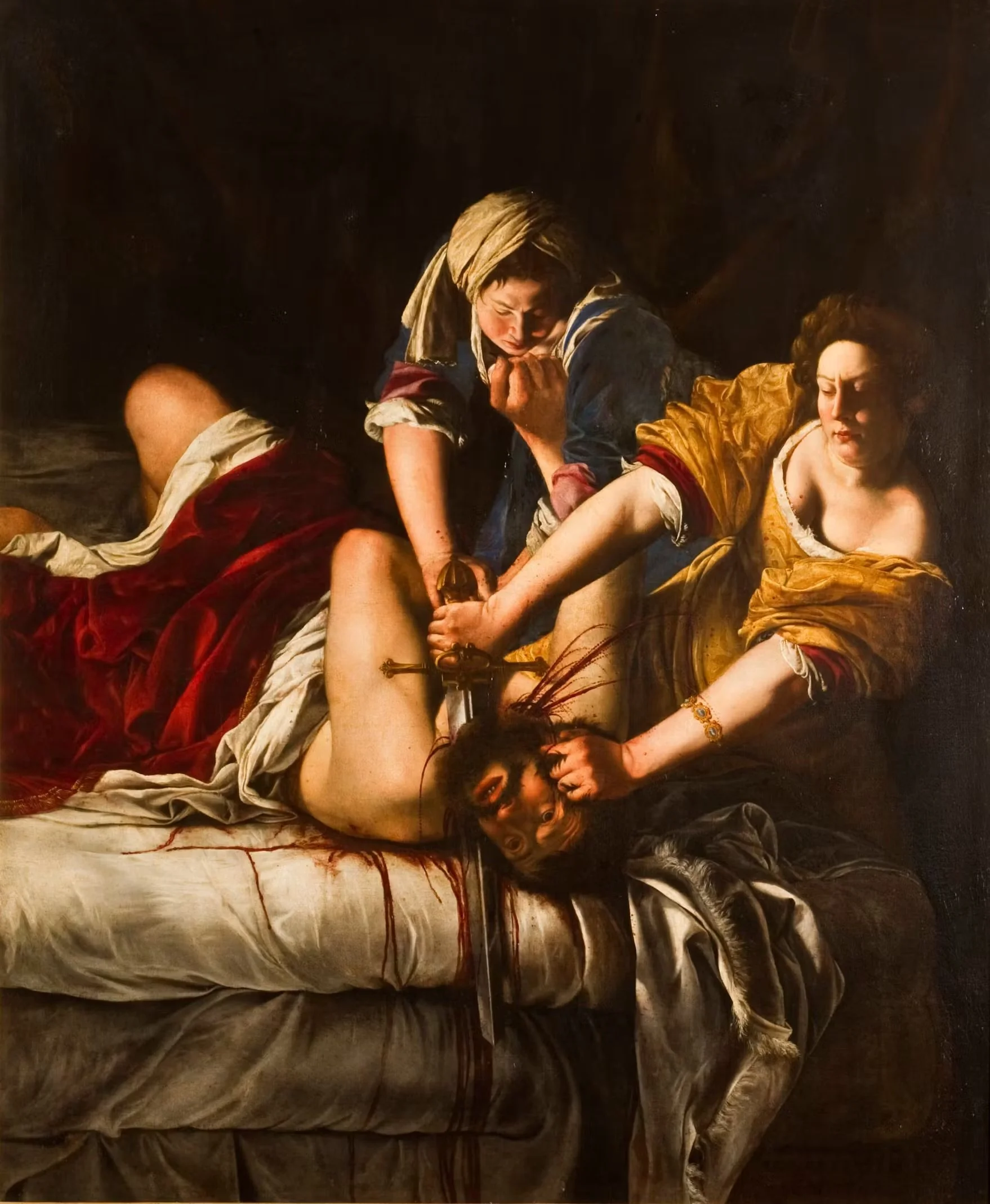Artemisia Gentileschi: The Pioneering Feminist Baroque Artist and Her Revolutionary Depictions of Women
By Wiktoria Iwaniak
Artemisia Gentileschi, Self-Portrait as Saint Catherine of Alexandria, about 1615-17, Oil on canvas, The National Gallery in London.
Image courtesy of Wiktoria Iwaniak.
Artemisia Gentileschi is arguably the most renowned female artist of the seventeenth century. Born in Rome, she was the only daughter of the artist Orazio Gentileschi, under whose tutelage she trained. By her mid-teens, Artemisia was producing professional works of art, and her remarkable talent led her to work for the highest echelons of European society, including the Spanish king, Philip IV. Gentileschi’s work is distinctive in the respect that, before she came along, very few paintings depicted gender relations from a clearly female perspective. She consistently contradicted and challenged patriarchal values, which was revolutionary for her time. Mary Garrard, a notable feminist scholar, refers to Artemisia using the term ‘feminist’, rather than ‘proto-feminist’ or ‘pre-feminist’, believing that if we do not acknowledge feminism as a continuum that has evolved, we risk separating women from our history and minimising the overall historical significance of the feminist movement.
Left: Artemisia Gentileschi; Viviano Codazzi (building); Domenico Gargiulo (landscape), Bathsheba and David, about 16135-37, Oil on canvas, Columbus Museum of Art (temporarily in the Getty).
Right: Artemisia Gentileschi; Viviano Codazzi (building); Domenico Gargiulo (landscape), Susanna and the Elders, about 1635-37, Oil on canvas, Collection of Dick Wolf (temporarily in the Getty).
Image courtesy of Wiktoria Iwaniak.
Whilst in Los Angeles this summer, I had the pleasure of seeing some of Gentileschi’s work in person for the first time; a truly breathtaking experience. The Getty Museum held an exhibition entitled Artemisia’s Strong Women: Rescuing a Masterpiece, which centred on a recently rediscovered and restored painting depicting the story of Hercules and Omphale. The piece is displayed alongside three additional paintings by Artemisia, highlighting her skill and sensitivity in portraying donne forti (strong women). Together, the works emphasise the strategy she used to create a brand for herself in the competitive art world of the time: painting with a distinctive approach to traditional classical and biblical subjects. Even though the exhibition was small, with only a couple of pieces on display in a little, easy-to-miss room in the East Pavilion, its impact was immense.
Artemisia Gentileschi, Lucretia, about 1627, Oil on canvas, The Getty Museum.
Image courtesy of Wiktoria Iwaniak.
One of the paintings on display was Lucretia, a dramatic and poignant depiction of the Roman heroine moments before committing suicide. After being raped by the son of the King of Rome, Sextus Tarqinius, she could not live with the shame and disgust she felt from her body being violated, leading to her taking her own life. The sharp chiaroscuro brings direct attention to Lucretia, who emerges from the shadows, grasping a dagger and aiming it at her chest. The suppleness of her skin and the luxurious fabrics she is dressed in drastically contrast with the horror that is about to ensue. This is a scene of female autonomy; Lucretia is reclaiming the control that was stolen away from her and making her own choices, even if these choices have drastic consequences. Artemisia’s depiction of Lucretia evokes great sympathy for her, highlighting the lengths women had to go to due to the actions of men. Lucretia became an enduring symbol of female strength, her story having personal resonance to the artist, who was raped by an acquaintance of her fathers at the age of seventeen. Her raw, unhesitating approach to her subject matter is provocative and at times disturbing, interpreted by many as a means of defying the oppressive forces of patriarchy. Her depictions of liberated and headstrong women represent a voice for women who were silenced and ignored. Sometimes actions speak louder than words, as can be seen in Gentileschi’s work.
Artemisia Gentileschi, Judith Beheading Holofernes, 1620 c, Oil on canvas, 146.5 x 108 cm, The Uffizi.
Image courtesy of Le Gallerie Degli Uffizi.
Artemisia has become crucial to art historical gender studies, being one of the first female artists to break away from traditional stereotypes associated with women in art. It may be asserted that female artists are more inward-looking and nuanced in their treatment of their medium, and Gentileschi often uses her art to insist that women are survivors, not victims of the patriarchy. I want to draw particular focus on her depiction of Judith Beheading Holofernes, one of her most notable works, and the piece that introduced me to the artist. The fierce emotional honesty and pure brutality, along with the lack of hesitation or remorse behind Judith’s actions, immediately draw the viewers’ attention. Gripping his head, she brutally plunges the sword into his neck, with pure concentration on her face. As argued by Linda Nochlin, no subtle femininity would seem to link to the work of Artemisia Gentileschi; her female subjects are unashamedly strong and courageous women.
Caravaggio, Judith Beheading Holofernes, 1599 ca, Oil on canvas, 145 x 195 cm, Palazzo Barberini.
Image courtesy of Gallerie Nazionali Barberini Corsini.
Artemisia's characters gain depth and complexity in their changing iterations, which can be seen by comparing her work to other depictions of the same scenes. Caravaggio and Gentileschi both paint the moment of Judith Beheading Holofernes; yet their portrayals differ greatly. Caravaggio’s Judith appears very hesitant and almost afraid, giving the impression she has been convinced to do this by the maidservant beside her. However, in Artemisia’s interpretation, Judith dominates the image, and Holofernes; she is entirely in control, with the maid assisting in restraining him. Some scholars have suggested that Holofernes stands in for the man who violated Artemisia in her youth, adding personal emotional depth to the piece. Thus, through presenting Judith in an assertive, masculine manner, the artist emphasises that women are more than mere weak and submissive objects for men to exploit.
To this day, Artemisia Gentileschi remains an artist remembered for her revolutionary depictions of women and for demonstrating to the art world that a repressive patriarchal society would not constrain her. Only in more recent scholarship have successful female artists, such as Gentileschi, been recognised for their incredible contributions to art history. This recognition adds to our knowledge of women’s achievements and underscores the importance of inclusivity in gaining a better understanding of history. Artemisia’s impact on the feminist movement is immense, and her legacy continues to inspire women to be unapologetic about their femininity.
Bibliography
Gallerie Nazionali Barberini Corsini. “Judith Beheading Holofernes | Gallerie Nazionali Barberini Corsini,” n.d. https://barberinicorsini.org/en/opera/judith-beheading-holofernes/.
Garrard, Mary D. Artemisia Gentileschi and Feminism in Early Modern Europe. London: Reaktion Books, 2020.
Le Gallerie Degli Uffizi. “Judith Beheading Holofernes | Artworks | Uffizi Galleries,” 2019. https://www.uffizi.it/en/artworks/judith-beheading-holofernes.
Nochlin, Linda. Why Have There Been No Great Women Artists?. S.L.: W W Norton, 1971.
The Getty. “Artemisia’s Strong Women: Rescuing a Masterpiece | Getty Exhibitions,” 2025. https://www.getty.edu/exhibitions/artemisia/.
The National Gallery, London. “Artemisia Gentileschi,” 2018. https://www.nationalgallery.org.uk/artists/artemisia-gentileschi.





